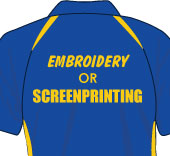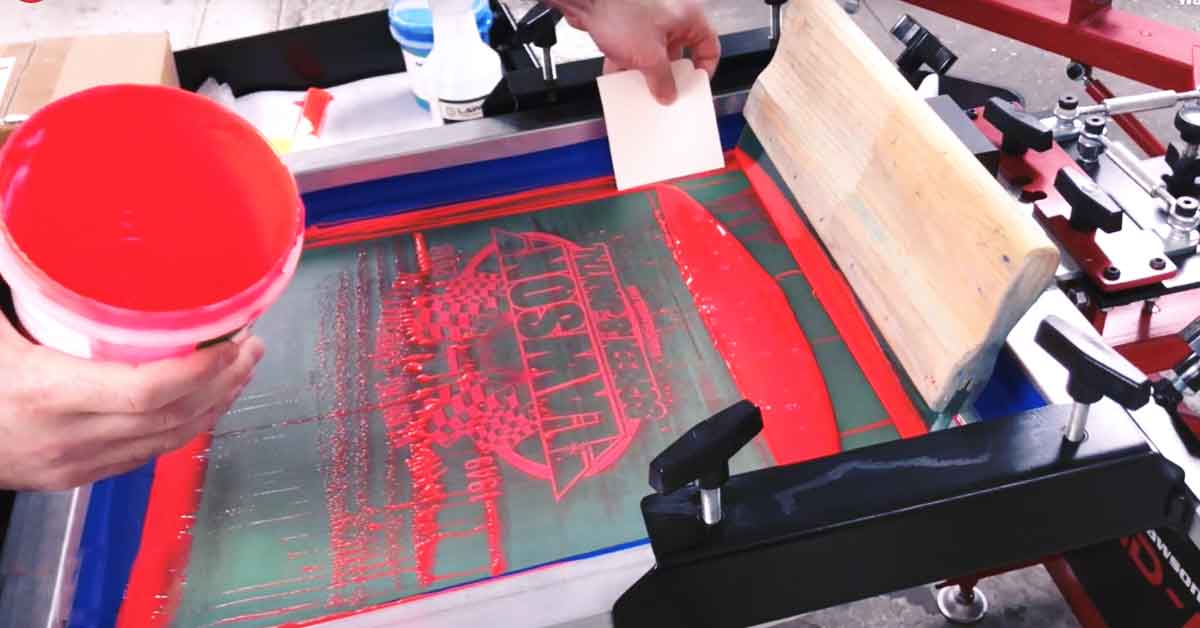Little Known Facts About Tx Tees.
Little Known Facts About Tx Tees.
Blog Article
The Basic Principles Of Tx Tees
Table of ContentsThe Buzz on Tx Tees6 Easy Facts About Tx Tees DescribedExcitement About Tx TeesNot known Details About Tx Tees The Best Strategy To Use For Tx TeesGet This Report about Tx TeesTx Tees for Beginners
That brings your overall to around $1,900 gross and delivery. Add up various other expenses, like the number of energies it takes to run the store and the expense of ink and emulsion per layout. custom cap printing. Take the print below. This is a one-color photo, so the expense of ink per t-shirt is approximately 20 cents.The emulsion should only be a few cents since you 'd only need to layer one display for this work. Normally, printers try to make up to 45% revenue on a print task.

With DTF, you can print a handful of shirts, or simply one. Both screen printing and DTF have their niches in the globe.
Tx Tees Things To Know Before You Get This
The most effective way to understand? Ask about and see what printing shop like yours are doing. custom screen printing. Try both out and see which you like much better
When you're selecting what kind of printing approach to make use of for publishing your artwork styles on your garments, it's vital that you know the differences between these two techniques so you can make best use of outcomes while minimizing costs. Screen printing is the most commonly used technique for printing designs on textiles.
DTG printing is also called spot or straight to garment printing due to the fact that it publishes just what is required rather than making a display as screen printers do. https://filesharingtalk.com/members/594250-txtees02?tab=aboutme&simple=1. Screen printing functions by screen filler squeegee display printing ink display mesh screen, after that transferring the photo to garment utilizing warm and/or pressure
The DTG printer utilizes unique dye-sublimation inks that are applied right into a pre-designed image by an electronic printing system. The inks become part of the textile, permitting dynamic shades and extraordinary information. It's also referred to as spot or direct to garment printing due to the fact that it publishes only what is required instead of making a screen as display printers do.
Tx Tees for Beginners
Initially, it's much quicker - you can publish a fullcolor photo in minutes, instead of hours for screen printing. Second, there's no established time or prices involved - you can print any design you like, without having to create a display first. Third, there's no waste - because screen printers screen print one layout at once, they need to evaluate each shade independently.
The paper is really pricey and can just be made use of when. Once it's published on, it needs to be thrown out. - The preliminary purchase cost is lower than the upfront investment of DTG printers- You can publish multi-color layouts one display each time rather than having to print each shade independently like DTG printing.

Tx Tees Fundamentals Explained
Rather of utilizing display mesh as screen printers do, color sublimation printers use laser modern technology to move your pictures onto garments or paper. A heat procedure transfers the dye from its solid-state straight right into the gas phase which consequently merges it onto fabric substrates when they are rapidly heated to heats under high pressure.
Sublimation printing is green. It makes use of much less water than screenprinting, and because it does not entail using dangerous solvents, it's safe for all kinds of garments. The color sublimation inks are likewise odor-free when healed, important site unlike display printers that make use of dangerous chemicals throughout the screen printing procedure that leave an undesirable smell.
They additionally conserve cash on expensive tools like direct exposure systems given that color sublimation printers do not call for a UV direct exposure system or a flash remedy oven that is normally utilized in screen printing (custom cap printing). What is direct to garment printing (DTG Printing)? DTG printing is a digital screenprinting process that publishes straight onto material utilizing specialized inkjet printers
The Tx Tees Diaries
DTG printing provides many advantages over standard screenprinting, including the capacity to print photographic top quality pictures, higher shade vibrancy, and the capability to print styles on darker fabrics. DTG printers function by heating up the fabric ink up until it develops into a gas. The gas then penetrates the fabric, bonding with the fibers to produce a permanent print.

Display printers merely prepare their display after that start printing until they lack item or ink.- There is a large range of knowledgeable display printers around the world, which can be useful for beginners. - It's a slower procedure - display printers commonly have to wait for the ink to completely dry prior to they can print the next shade- Screen printers call for hand-operated labor, so there's a greater knowing curve and it takes longer to generate a high-grade layout- Screen printing isn't as accurate as DTG printing, so you may get some "blood loss" of colors from one part of the photo onto one more if not done properly.
4 Easy Facts About Tx Tees Explained
Instead of making use of screen mesh as display printers do, dye sublimation printers utilize laser modern technology to transfer your photos onto garments or paper. A heat process moves the color from its solid-state directly right into the gas phase which consequently merges it onto material substratums when they are rapidly heated up to high temperature levels under high pressure.
Sublimation printing is environment-friendly. It uses less water than screenprinting, and due to the fact that it doesn't include using harmful solvents, it's risk-free for all kinds of apparel. The dye sublimation inks are likewise unsmelling when cured, unlike screen printers that utilize unsafe chemicals during the screen printing process that leave an unpleasant odor.
They additionally conserve money on costly equipment like direct exposure units given that color sublimation printers don't require a UV exposure system or a flash remedy stove that is usually made use of in display printing. What is straight to garment printing (DTG Printing)? DTG printing is an electronic screenprinting procedure that publishes straight onto textile using specialized inkjet printers.
Everything about Tx Tees
DTG printing offers many advantages over typical screenprinting, consisting of the capability to publish photographic quality images, better shade vibrancy, and the capability to print layouts on darker textiles. DTG printers work by heating the fabric ink till it transforms into a gas. The gas then penetrates the material, bonding with the fibers to create a permanent print.
Report this page